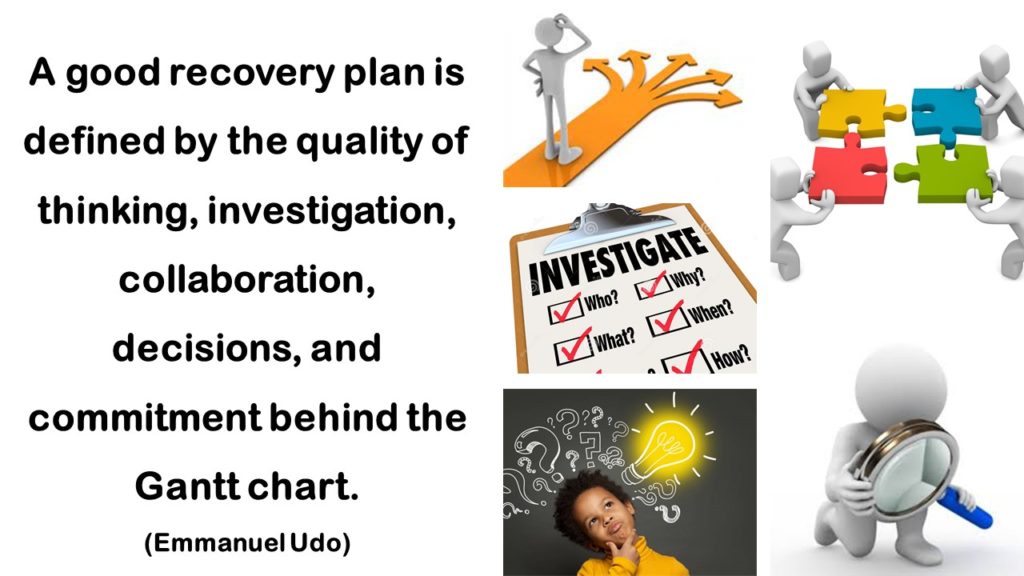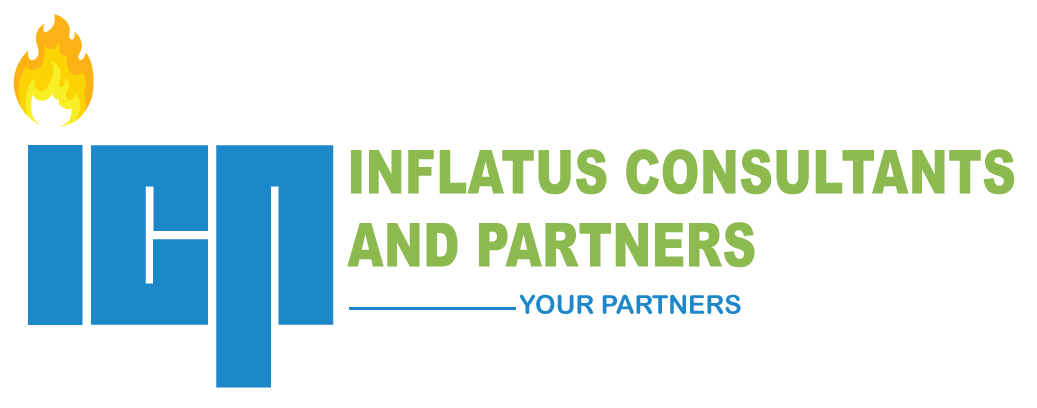THE COST OF A GOOD RECOVERY PLAN

What is the cost of a good recovery plan? I mean a really good recovery plan that cuts to the heart of the matter – identifies root causes of the problem, and working collaboratively with other stakeholders, devises solutions to them and build those into a recovery plan that works, and puts the project back on track, when implemented. How much should that cost? Have you ever considered it? I have.
How much should that cost:
- You,
- Your carrier,
- Your team,
- Your organization?
Is it 500, or 1000, or 5000 dollars?
To put it another way, what is the cost of a failed project if your recovery plan does not work, because that is what it really boils down to? I mean, the cost to:
- Your reputation,
- Your carrier aspirations,
- Your project team,
- Your organization?
Would that be 10,000 or 20,000 or 100,000 dollars?
To answer that question, let us consider what is called the Cost of Quality in quality management. In process improvement efforts, cost of quality is the total cost of quality-related efforts and deficiencies.
In other words, the cost of quality deals with the total cost of implementing the processes required to achieve the desired product quality. It also deals with the cost of the consequences of a failed quality control process. Quality costs are the costs associated with preventing, detecting, and remediating product issues related to quality.
The Cost of poor quality on the other hand, is the costs associated with providing poor quality products or services. They include:
- Appraisal costs incurred to determine the degree of conformance to quality requirements.
- Internal failure costs associated with defects found before the customer receives the product or service.
- External failure costs associated with defects found after the customer receives the product or service.
Philip Crosby referred to these measures as the “price of nonconformance” and argued that some organizations choose to pay for poor quality. A generally recommended rule of thumb is that costs of poor quality will be about 10-15% of operations.
The item of particular interest and relevant to our discussion is the external failure costs incurred to remedy defects discovered by customers, including:
- Repairs and servicing of returned products and those in the field,
- Warranty claims,
- Complaints costs associated with handling and servicing customers’ complaints,
- Returns of rejected or recalled products, including transport costs.
But all these costs do not include the cost of reputation damage and loss of customers, which may be unquantifiable.
Now, to answer the question: What is the cost of a good recovery plan, I would like to consider the cost of a poor-quality recovery plan, one that does not lead to project recovery. It is comparable to the cost of poor quality outlined above. I will illustrate it with the following examples.

Example 1: USD 14 Million Project.
This contractor had been awarded an offshore oil and gas project worth USD14m. The schedule started having problems soon after the kickoff meeting, even though the tell-tale signs were already visible to the discerning. Mobilization, Engineering, Procurement and Construction milestones were missed with regularity as if that was the purpose of the contract! Missed milestones were followed by recovery plans that never worked. Finally, the project took twice the contract duration.
Because of the mess that the project had become:
- Contractor CEO and top leaders were sacked
- Most project team members either left or were sacked; not one was present when the project was eventually completed.
- Penalty for project delay (10% of contract sum) was imposed
- The contractor suffered loss of reputation
- Company was blacklisted
How much do those add up to in monetary terms? How much would you pay to prevent that?
That is the cost of not being able to produce one good recovery plan to bring the project back on track. What would it cost to train the whole team on how to prepare a recovery plan that works? Comparatively, nothing!
Example 2: USD 100+ Million Project.
We had won a USD100+ million contract from one of the leading international oil companies. The client even paid additional sum for schedule acceleration.
Again, trouble started as soon after project kickoff. Milestones upon milestones were missed. Each cycle was followed by client complaint and the submission of a highly polished Primavera schedule that was not worth the paper on which it was printed because of lack of backup decisions and commitment. But the client fell for it. The project schedule went into free fall.

Well, when the schedule completion date arrived, we were still constructing equipment foundations! And what was the consequence?
- Client construction manager was sacked,
- Career aspirations truncated,
- Millions of dollars paid for schedule acceleration went down the drain,
- Contract terminated for poor performance,
- Contractor Supervisor and engineer sacked,
- Loss of reputation by contractor,
- Contractor blacklisted,
- Contract ended in litigation.
Well, my friend, that is the cost that you and your company pay when your people are not able to produce a good recovery plan. This training will save you and your company all of that.
Do you and your team know how to produce one?
Go here to continue.


